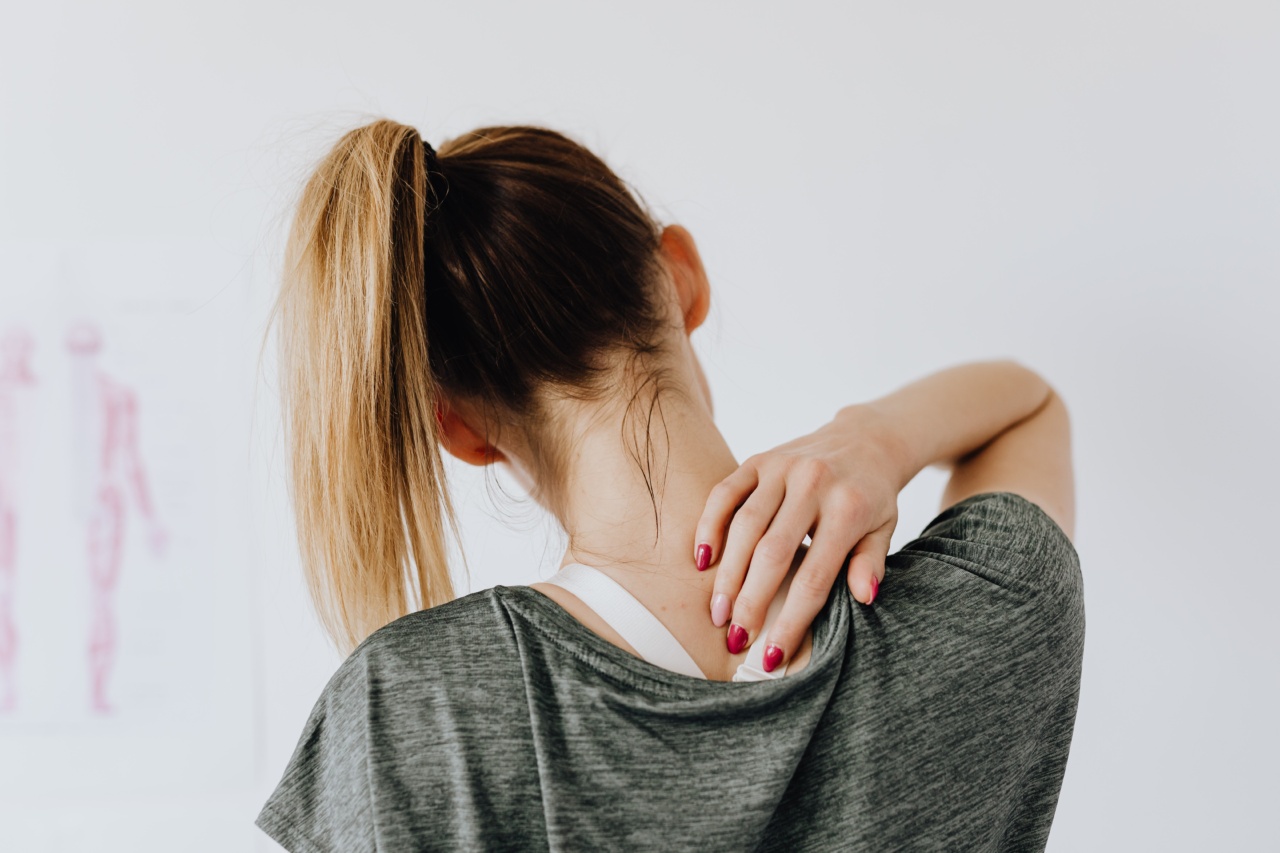Mid-back pain, also known as thoracic pain, can be a common ailment that affects people of all ages. It refers to discomfort or pain in the middle region of the spine, between the lower back and the neck.
Though not as widespread as lower back pain or neck pain, mid-back pain can still be quite debilitating and interfere with daily activities. In this article, we will explore the causes of mid-back pain and provide some effective methods to relieve it.
Causes of Mid-Back Pain
Mid-back pain can have several underlying causes. Identifying the root cause is crucial in determining the most suitable treatment methods. Here are some common causes of mid-back pain:.
Poor Posture
One of the leading causes of mid-back pain is poor posture. Sitting or standing with a slouched back for extended periods can strain the muscles and ligaments in the thoracic region, leading to pain and discomfort.
Additionally, poor posture can put unnecessary pressure on the spinal discs, causing further issues over time.
Muscle Strain or Sprain
Engaging in activities that involve repetitive or sudden movements, such as lifting heavy objects, can strain or sprain the muscles in the mid-back. This can lead to localized pain and stiffness in the affected area.
Herniated Disc
A herniated disc in the mid-back occurs when the soft inner portion of a spinal disc pushes through the tough outer layer. This can compress nearby nerves, resulting in mid-back pain.
Herniated discs in the thoracic region are less common compared to those in the lumbar (lower back) or cervical (neck) regions.
Spinal Stenosis
Spinal stenosis refers to the narrowing of the spinal canal, causing pressure on the spinal cord and nerves. Although it commonly affects the lower back and neck, it can also occur in the mid-back, leading to pain and discomfort.
Postural Kyphosis
Postural kyphosis, also known as “roundback” or “hunchback,” is a condition characterized by an excessive forward curvature of the thoracic spine.
This condition can cause mid-back pain, especially when the prolonged stooped position puts strain on the muscles and ligaments in the area.
Effective Methods to Relieve Mid-Back Pain
Now that we have explored some common causes of mid-back pain, let’s discuss various methods to relieve the discomfort.
It is important to note that these methods are general recommendations, and consulting with a healthcare professional is advisable for individualized guidance.
1. Improve Posture
Correcting and improving posture can significantly alleviate mid-back pain. Practice mindful sitting and standing by keeping the back straight, shoulders relaxed, and chin slightly tucked in.
Utilizing ergonomic chairs and pillows can also provide adequate support to maintain proper alignment.
2. Stretching and Strengthening Exercises
Engaging in specific stretching and strengthening exercises can help alleviate mid-back pain and prevent its recurrence. Exercises targeting the mid-back muscles, such as the rhomboids and trapezius, can improve their strength and flexibility.
It is recommended to consult with a physical therapist or fitness professional for appropriate exercises tailored to individual needs.
3. Heat and Cold Therapy
Applying heat or cold to the affected area can help reduce inflammation and relieve pain. Using a heating pad, warm towel, or hot water bottle on the mid-back can improve blood flow and relax the muscles.
Cold therapy, such as ice packs or cold compresses, can numb the area and reduce swelling.
4. Over-the-Counter Pain Medication
For mild to moderate mid-back pain, over-the-counter pain medications like ibuprofen or acetaminophen can be effective in providing temporary relief.
However, it is important to follow the recommended dosage and consult a healthcare professional if the pain persists or worsens.
5. Massage Therapy
Massage therapy can help alleviate mid-back pain by promoting relaxation, improving blood circulation, and reducing muscle tension.
Various massage techniques, such as Swedish massage or deep tissue massage, can target the affected muscles and provide relief. It is advisable to consult a licensed massage therapist for appropriate treatment.
6. Postural Braces
Postural braces are wearable devices designed to support the spine and promote proper posture. They can be helpful in correcting poor posture habits and reducing mid-back pain.
However, the prolonged use of braces should be done under professional guidance to avoid muscle weakness or dependence on the device.
7. Physical Therapy
When mid-back pain becomes chronic or significantly affects quality of life, seeking help from a physical therapist can be beneficial.
A physical therapist can assess the condition, develop a personalized treatment plan, and provide hands-on therapies along with exercises for long-term pain relief and improved functionality.
8. Stress Reduction Techniques
Stress and anxiety can contribute to the tension and discomfort experienced in the mid-back region.
Incorporating stress reduction techniques such as meditation, deep breathing exercises, yoga, or mindfulness practices into daily routines can help in managing mid-back pain.
9. Improvement of Ergonomics
Poor ergonomics at workplaces or sedentary activities can contribute to mid-back pain. Adjusting the height and position of chairs, desks, and computer screens to promote better alignment can help alleviate the discomfort.
Using ergonomic tools and accessories such as supportive cushions and adjustable desks can also provide relief.
10. Sleep Position and Support
Optimal sleep position and adequate support are crucial to prevent mid-back pain during rest. Sleeping on a medium-firm mattress that supports the natural alignment of the spine is recommended.
Placing a pillow or cushion under the knees while sleeping on the back or between the knees while sleeping on the side can help maintain proper spinal alignment.






























